Here are 2 more solutions that seem to beat previous ones on the quick-bench.com benchmark.
This one has a test but that compiles to branchless code with clang:
int isleap3(int year) {
unsigned y = year + 16000;
return (y % 100) ? !(y % 4) : !(y % 16);
}
This one uses a single modulo operation and no tests, and compiles to just 2 multiplications:
static unsigned char const leaptest[400] = {
1,0,0,0,1,0,0,0,1,0,0,0,1,0,0,0,1,0,0,0,1,0,0,0,1,
0,0,0,1,0,0,0,1,0,0,0,1,0,0,0,1,0,0,0,1,0,0,0,1,0,
0,0,1,0,0,0,1,0,0,0,1,0,0,0,1,0,0,0,1,0,0,0,1,0,0,
0,1,0,0,0,1,0,0,0,1,0,0,0,1,0,0,0,1,0,0,0,1,0,0,0,
0,0,0,0,1,0,0,0,1,0,0,0,1,0,0,0,1,0,0,0,1,0,0,0,1,
0,0,0,1,0,0,0,1,0,0,0,1,0,0,0,1,0,0,0,1,0,0,0,1,0,
0,0,1,0,0,0,1,0,0,0,1,0,0,0,1,0,0,0,1,0,0,0,1,0,0,
0,1,0,0,0,1,0,0,0,1,0,0,0,1,0,0,0,1,0,0,0,1,0,0,0,
0,0,0,0,1,0,0,0,1,0,0,0,1,0,0,0,1,0,0,0,1,0,0,0,1,
0,0,0,1,0,0,0,1,0,0,0,1,0,0,0,1,0,0,0,1,0,0,0,1,0,
0,0,1,0,0,0,1,0,0,0,1,0,0,0,1,0,0,0,1,0,0,0,1,0,0,
0,1,0,0,0,1,0,0,0,1,0,0,0,1,0,0,0,1,0,0,0,1,0,0,0,
0,0,0,0,1,0,0,0,1,0,0,0,1,0,0,0,1,0,0,0,1,0,0,0,1,
0,0,0,1,0,0,0,1,0,0,0,1,0,0,0,1,0,0,0,1,0,0,0,1,0,
0,0,1,0,0,0,1,0,0,0,1,0,0,0,1,0,0,0,1,0,0,0,1,0,0,
0,1,0,0,0,1,0,0,0,1,0,0,0,1,0,0,0,1,0,0,0,1,0,0,0,
};
int isleap4(int year) {
unsigned y = year + 16000;
return leaptest[y % 400];
}
clang 64-bit Assembly:
isleap3: # @isleap3
add edi, 16000
imul eax, edi, -1030792151
ror eax, 2
cmp eax, 42949673
mov eax, 15
mov ecx, 3
cmovb ecx, eax
xor eax, eax
test ecx, edi
sete al
ret
isleap4: # @isleap4
add edi, 16000
imul rax, rdi, 1374389535
shr rax, 39
imul eax, eax, 400
sub edi, eax
movzx eax, byte ptr [rdi + leaptest]
ret
leaptest:
.asciz "\001\000\000\000\001\000\000\000\001\000\000\000\001\000\000\000\001\000\000\000\001\000\000\000\001\000\000\000\001\000\000\000\001\000\000\000\001\000\000\000\001\000\000\000\001\000\000\000\001\000\000\000\001\000\000\000\001\000\000\000\001\000\000\000\001\000\000\000\001\000\000\000\001\000\000\000\001\000\000\000\001\000\000\000\001\000\000\000\001\000\000\000\001\000\000\000\001\000\000\000\000\000\000\000\001\000\000\000\001\000\000\000\001\000\000\000\001\000\000\000\001\000\000\000\001\000\000\000\001\000\000\000\001\000\000\000\001\000\000\000\001\000\000\000\001\000\000\000\001\000\000\000\001\000\000\000\001\000\000\000\001\000\000\000\001\000\000\000\001\000\000\000\001\000\000\000\001\000\000\000\001\000\000\000\001\000\000\000\001\000\000\000\001\000\000\000\001\000\000\000\000\000\000\000\001\000\000\000\001\000\000\000\001\000\000\000\001\000\000\000\001\000\000\000\001\000\000\000\001\000\000\000\001\000\000\000\001\000\000\000\001\000\000\000\001\000\000\000\001\000\000\000\001\000\000\000\001\000\000\000\001\000\000\000\001\000\000\000\001\000\000\000\001\000\000\000\001\000\000\000\001\000\000\000\001\000\000\000\001\000\000\000\001\000\000\000\001\000\000\000\000\000\000\000\001\000\000\000\001\000\000\000\001\000\000\000\001\000\000\000\001\000\000\000\001\000\000\000\001\000\000\000\001\000\000\000\001\000\000\000\001\000\000\000\001\000\000\000\001\000\000\000\001\000\000\000\001\000\000\000\001\000\000\000\001\000\000\000\001\000\000\000\001\000\000\000\001\000\000\000\001\000\000\000\001\000\000\000\001\000\000\000\001\000\000\000\001\000\000"
Here is the are the benchmark results:







